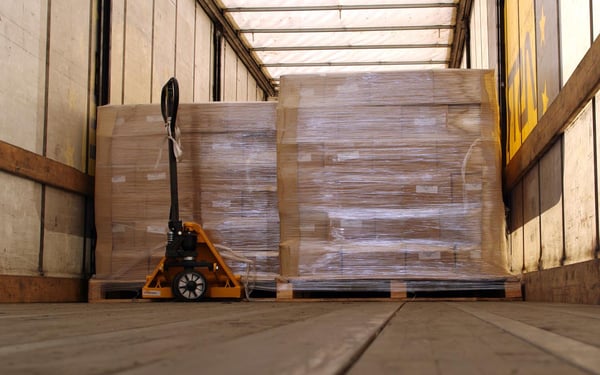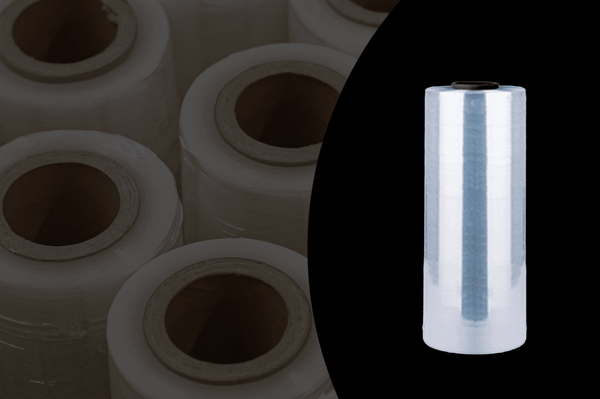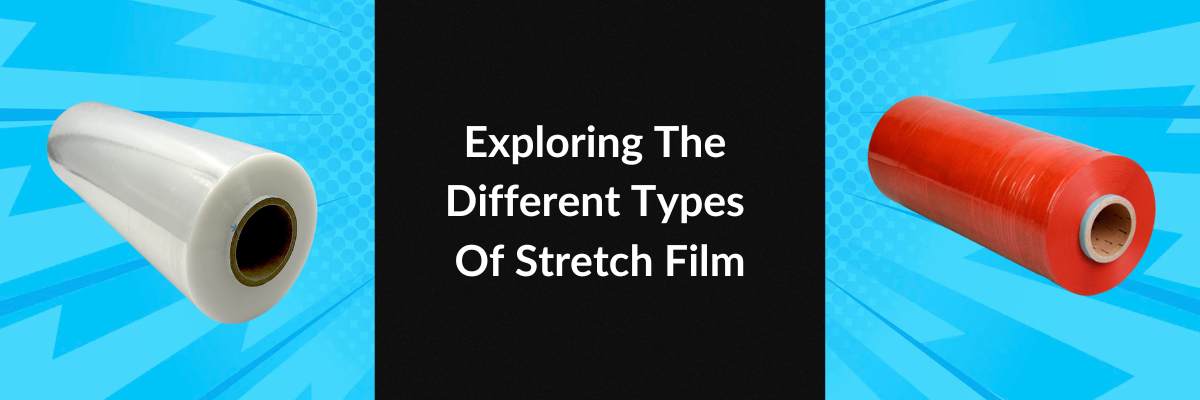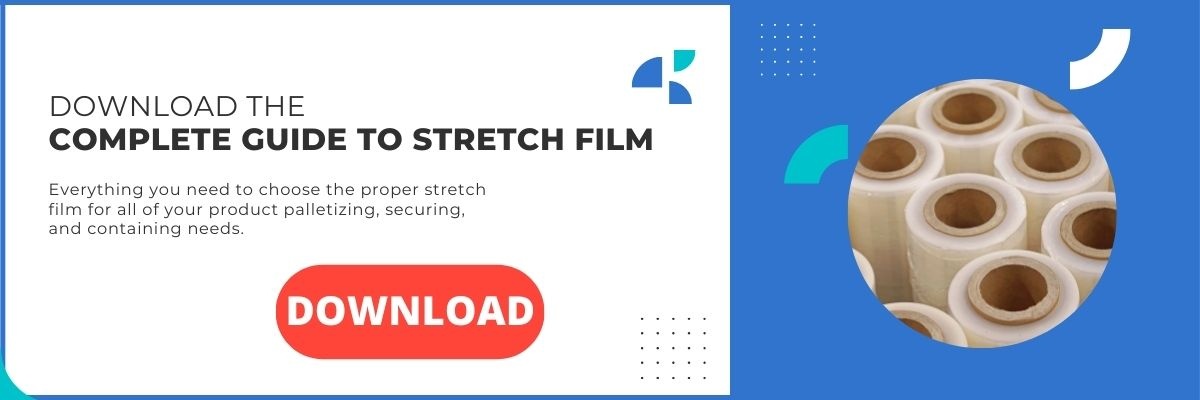Exploring The Different Types Of Stretch Film
Packaging Materials | Plant Performance | Packaging Design | Packaging Psychology
Stretch wrapping is one of the most common tools for unitizing products for transport. However, just because a pallet is wrapped and looks good to the naked eye does not mean it is wrapped well, efficiently, or most importantly... SAFELY.
When the proper stretch wrapping is negated, problems can arise during shipping. Depending on the severity of the problem, your business may end up with a bruised reputation and potential safety failures.
Below, we will explore the various types of stretch film so that you can decide which is best for your particular applications and needs.
What Is Stretch Film?
Stretch wrap or stretch film is an extremely elastic plastic wrap that is stretched around various products (such as pallets of boxes) for shipping and transportation. The elastic recovery or stretchability of the film secures the products and ensures they are tightly bound.
Stretch wrap sticks tightly to itself and is used in millions of companies across the globe. It is often implemented in the unitizing of various products. Still, it can also be leveraged for packaging bundles of small objects.

Types Of Stretch Film
There are many different types of stretch film. Below you will find a list of each type. Beneath the list, we will investigate each film's capabilities, common uses, and varied dynamic qualities. You should take notes here as there is a lot of information to digest.
- Machine Stretch
- Cast Stretch
- Blown Stretch
- Pre-Stretch
- Hay Baling Stretch
- Hand Stretch
- Color Stretch
- UVI Stretch
- VCI Stretch
- Vented Stretch
- Reinforced Stretch
- No Cling Stretch
Machine Stretch Films
Machine stretch film was created to be used by a stretch wrap machine. It has the upper hand over hand film in various ways, including but not limited to quicker and greater efficiency in packaging, lower material spending, greater safety, and superior load containment. There are several kinds of machine stretch films: cast machine stretch film, blown machine film, and pre-stretched films.
Cast Stretch Film
Cast stretch film is made by applying a comprehensive manufacturing operation called cast extrusion. This action mandates the continual thrusting of a thermoplastic substrate into a flat die and onto a cooled roll.
The film gauge is resolved by how quickly the casting roll drags the plastic away from the die. This treatment causes cast films to boast superior clarity, allowing end users to observe the wrapped objects. This film stretches easier due to the molecules being aligned as they're extruded.
Cast stretch film is exceedingly quiet when removed from the roll and relatively simple to stretch. Cast stretch film also provides two-sided cling that grants wrapped products the ability to remain firmly wrapped during transportation.
While cast stretch film has multiple fantastic attributes, such as a more affordable cost than blown film, it does not hold a candle to blown film in sustaining strength or protection against tearing. Cast stretch film can generally stretch easily but has less robust stretch memory than other films.
Blown Stretch Film
Blown stretch film is created through a function called blown extrusion. This operation involves plastic melt being pushed into a circular slit die, resulting in a refined tube.
Next, the air is pushed into the tube, granting the volume of air enclosed to expand the tube to the optimal width. The tube is topped with an air ring which is then blown onto the substrate to chill. Chilling the material provides the blown film with greater strength and flexibility than other wraps.
As blown film is generally more robust than most other stretch wraps, it also boasts excellent resistance to tearing.
This is advantageous when containing loads with pointy edges vulnerable to collapsing thinner films. Blown films provide a high degree of memory when stretched. This means that packages remain secured.
Unfortunately, blown film is more expensive and has poorer transparency than other films. It also produces what some consider an annoying level of noise when compared to other similar substrates.
Want to learn more about stretch film?
Pre-Stretch Film
Pre-stretched film is expanded near its breaking point before it is wrapped onto rolls. This film does not necessitate as much energy as other stretch films to achieve the same wrapping force.
Pre-stretched film consumption often uses around 50% less than other stretch films, making for potentially extreme cost reductions.
Hay Baling Stretch Film
Hay baling stretch film is a multi-layer specialty stretch wrapping substrate made for wrapping baled rolls of hay. It is used primarily in the agricultural and farming industries.
Also known as silage stretch wrap, many types of these wraps feature LDPE (low-density polyethylene) formulations with oxygen barriers to keep your hay bales dry.
Non-Machine Stretch Films
Hand Stretch Film
Hand stretch film is made exclusively to be wrapped by human labor manually. It is also known as hand film, hand stretch wrap, hand wrap, or manual pallet wrap.
It is commonly used by companies that wrap small volumes of products. Generally speaking, that would be companies that wrap less than 50 pallets per day.
The capabilities of manual stretch film must be continually checked against the various potential improvements that come with switching to a stretch wrapping machine.
Selecting the proper stretch application for your packaging line will improve efficiency and result in a more cost-effective production.

Color Stretch Film
Color stretch films were created to serve a very specialized niche area of packaging needs that other stretch film types cannot adequately service.
Color stretch film is perfect for warehouse color coding, international transportation, or dating inventory. Color stretch wrap is designed to be resistant to puncture.
UVI Stretch Film
Ultraviolet film is a stretch film with special light-discouraging additives that defend it from photographic degeneration in applications where wrapped products are kept outside and exposed to the elements.
VCI Stretch Film
VCI, or Vapor Corrosion Inhibitor stretch film, is made specifically for wrapping metal components, so they don't rust. This formulation prevents the oxidation of metals and is commonly used for packaging tools, metal pipes, and other metal products or materials.
Reinforced Stretch Film
Reinforced stretch films are thick films with especially strong formulations used to package and protect hefty loads for transportation and shipping. For example, this type of film is commonly used for palletizing and unitizing bricks and cinder blocks.
Vented Stretch Film
Vented stretch film is commonly utilized in applications where airflow and oxygen need to be available for packaged products. IE: wrapping pallets of wood, hot bakery items, etc.
NO Cling Stretch Film
No cling stretch film is used for packaging products such as carpeting so that the products being packaged can slide on and over each other without getting caught and tearing. There is also a variant of no-cling stretch film that has only one side that clings called one-sided cling stretch film.
Specialty Stretch Films
In some cases, specialized wrapping projects require the implementation of performance films with multiple layers with very high stretch capabilities. In addition, gauge reductions can be used, resulting in uncommon thicknesses of stretch films for similar applications.
More Information About Stretch Film
After familiarizing yourself with the different types of stretch film listed above, you will be able to start formulating your ideas on which is the best fit for your company and the products you are packaging with the packaging machinery or labor force that you have.
Depending on your budget, packaging line, and machinery, you may still not be sure which stretch film suits you. It would help if you considered reaching out to at least three vendors and asking for recommendations on a film that best suits your unique needs.
Getting a professional analysis of your packaging line, machinery, labor force, and current materials is also a good idea. With the information provided by said analysis, you can choose the best stretch wrapping solution for your business.
Finally, a quality preventative maintenance program will ensure that you always run the best stretch wrap for your particular applications.
As time passes, this program will allow for expert advice on making changes as new advancements in stretch wrap develop through technological innovation, product considerations, and the types of equipment you are utilizing.
Finally, if you are looking for more information about stretch film, you should review the complete guide to stretch film linked below.
About Nathan Dube
As the Digital Marketing Specialist at Industrial Packaging, I am honored to create content for such a phenomenal company and work with one of the greatest teams in the Packaging Industry. Whether creating a video, writing blog posts or generating other pieces of content and multimedia, I am always excited to help educate and inspire our prospects and clients to reach their highest potential in regards to their packaging processes and needs.




